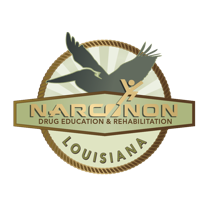Anabolic Abuse
Anabolic Steroids are a class of natural and synthetic steroid hormones that promote cell growth and division, resulting in growth of muscle tissue and sometimes bone size and strength. Steroids act in different ways on the body to promote muscle growth, and every steroid has androgenic and anabolic properties. It is because of this, they are properly referred to in medical texts as AAS (anabolic/androgenic steroids).Testosterone is the best known natural anabolic steroid, as well as the best known natural androgen.
Steroids produce both anabolic and virilization effects. Most anabolic steroids work in two simultaneous ways. First, by binding the androgen receptors and increasing protein synthesis. Secondly, they also reduce recovery time by blocking the effects of the stress hormone, cortisol, on muscle tissue. As a result, catabolism of the body’s muscle mass is greatly reduced. Increased protein synthesis from amino acids
Examples of anabolic effects:
Increased protein synthesis from amino acids
Increased muscle mass and strength
Increased appetite Increased bone remodeling and growth
Stimulation of bone marrow increasing production of red blood cells
Examples of virilizing effects:
Growth of the clitoris (clitoral hypertrophy) in females and the penis in male children (the adult penis does not grow indefinitely even when exposed to high doses of androgens)
Increased growth of androgen-sensitive hair (pubic, beard, chest, and limb hair)
Increased vocal cord size, deepening the voice
Increased libido
Suppression of endogenous sex hormones
Impaired spermatogenesis
Many androgens are metabolized to estrogenic compounds which bind estrogen receptors, producing additional (usually) unwanted effects:
Accelerated bone maturation in children
Gynecomastia
Other side effects (some the opposite of intended effects) include elevated blood pressure and cholesterol levels, severe acne, reduced sexual function, testicular atrophy, and conversion to DHT (Dihydrotestosterone) resulting in premature baldness. In males, abnormal breast development (gynecomastia) can occur. In females, anabolic steroids have a virilizing effect, resulting in a permenant increase in body hair, permanent deepening of the voice, a permanently enlarged clitoris (clitoral hypertrophy), and fewer menstrual cycles. In adolescents, abuse of these agents may prematurely stop the lengthening of bones (premature epiphyseal fusion through increased estrogen), resulting in stunted growth. Serious medical illness can result from extreme hormone use. Enlargement of the heart (the heart is a muscle and thus affected by the muscle-building qualities of the hormones) is a risk which increases the chance of an adverse cardiac event occurring in later life. Heavy steroid use can affect hormone-sensitive tissue and organs, in particular, the prostate, causing increases of prostate cancer in heavy users. Another long-term health risk is liver damage, particularly with oral anabolic steroid compounds which are 17-alpha-alkylated in order to not be destroyed by the digestive system.
An ideal anabolic steroid (a hormone with purely anabolic effects and no virilizing or other side effects) has been widely sought. Many synthetic anabolic steroids have been developed in an attempt to find molecules that produced a higher degree of anabolic rather than virilizing effects. Unfortunately, the most effective steroids known for increasing lean body mass also have the strongest androgenic characteristics.
Use and abuse in athletics and bodybuilding: These drugs are used by track and field athletes, weight lifters, bodybuilders, shot putters, cyclists, professional baseball players, professional wrestlers, police officers and others to give them a competitive advantage, and improve their physical appearance or to allow them to better compete with others who have a physical advantage, perhaps from a more fortunate natural endowment of endogenous steroids or from steroid use as well. Steroid use to obtain competitive advantage is prohibited by the rules of the governing bodies of many sports, and officially condoned by none.
According to the 1999 Monitoring the Future study, the percentage of eighth, tenth, and twelfth graders in the United States who reported using steroids at least once in their lives increased steadily over the preceding four years (an average of 1.8 % in 1996, 2.1 % in 1997, 2.3 % in 1998, and 2.8 % in 1999). In addition, steroid use to enhance athletic performance is no longer limited to high school males: a 1998 Pennsylvania State University study found that 175,000 high school girls nationwide reported taking steroids at least once in their lifetime.
On January 20, 2005, the Anabolic Steroid Control Act of 2004 took effect, amending the Controlled Substance Act to place both anabolic steroids and prohormones on a list of controlled substances, making possession of the banned substances a federal crime.
List of Anabolic Compounds Commonly used as Ergogenic Aids
Testosterone (attached to various esters enanthate, cypionate, propinate or suspended in oil or water)
Methandrostenolone / methandienone (Dianabol)
Nandrolone / Nor-testosterone (Deca-durabolin)
Boldenone (Equipoise)
Stanozolol (Winstrol)
Oxymetholone (Anadrol-50)
Oxandrolone (Anavar)
Fluoxymesterone (Halotestin)
Trenbolone (Fina)
Oxymetholone (Primobolan) NB: many of these products are no longer available from the original manufacturer and are now manufactured by “underground” laboratories in the United States, Mexico, and Canada, but are still widely available in certain countries, in most cases from a subsidiary of the original manufacturer (e.g. Schering, Organon).
